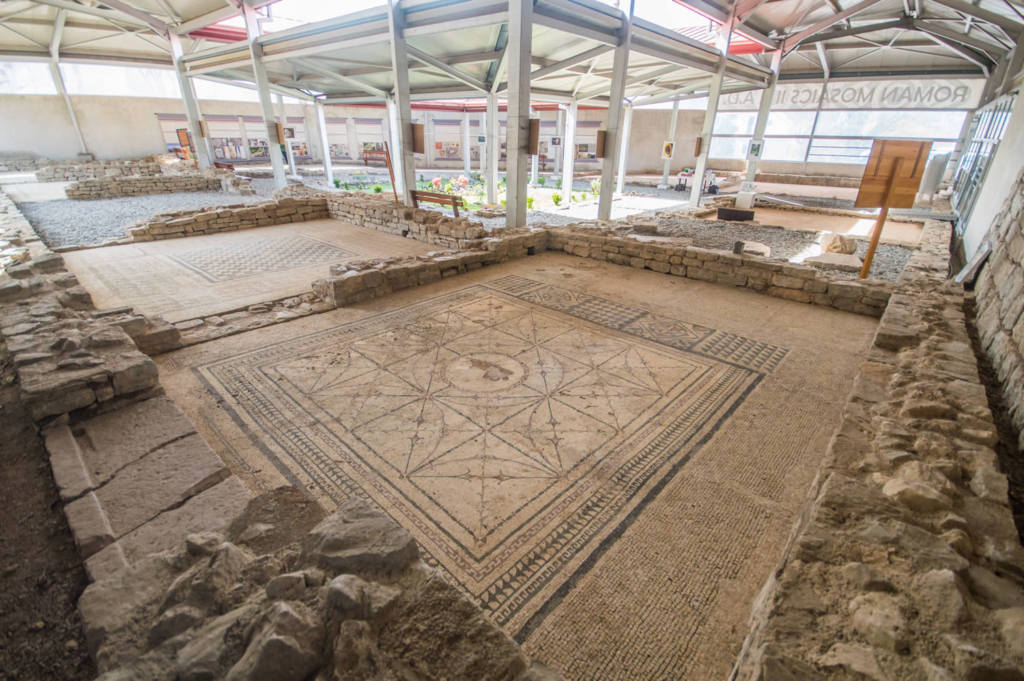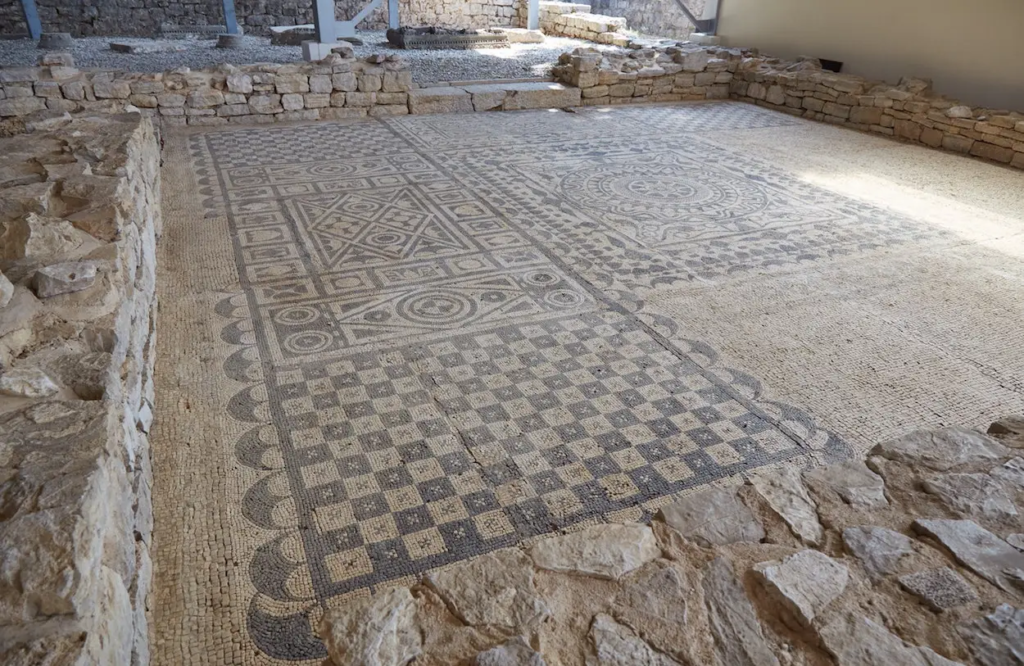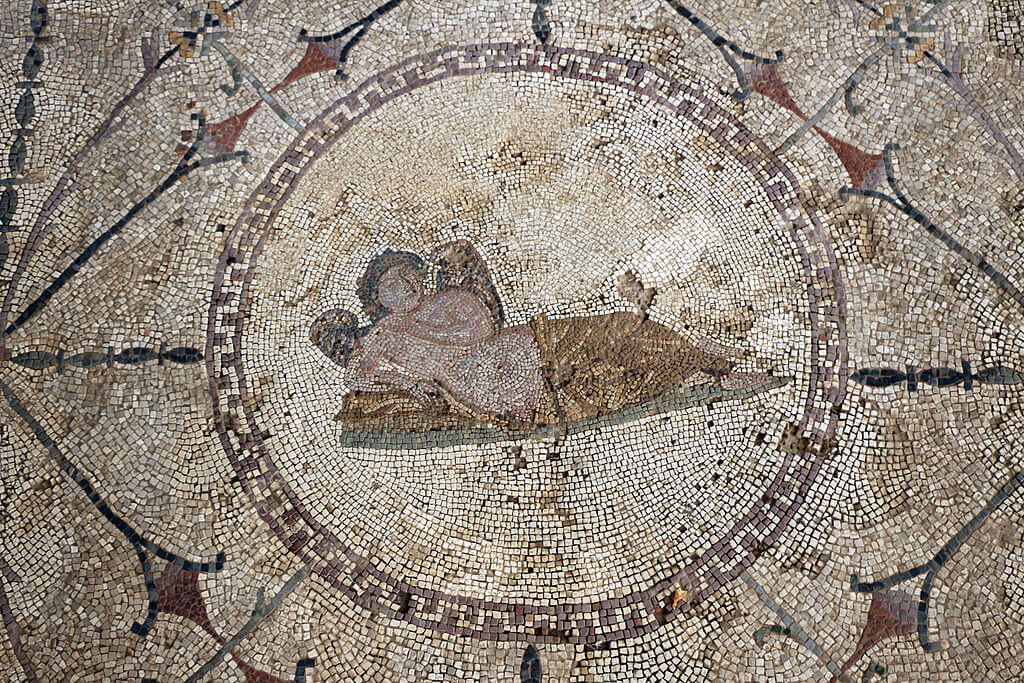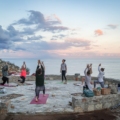Did you know that the small town of Risan in Montenegro hides one well-known mosaic from the Roman era? That’s right! Not only this, but the Risan mosaic is also the only known mosaic depicting the Greek god of sleep, Hypnos.
This is, however, no surprise, as Risan is one of the oldest settlements in Boka. Information suggests that it was mentioned in the 4th century B.C. Today, Risan attracts tourists due to its calm atmosphere and peaceful nature, which surrounds both modern buildings and ancient sights.
If you want to read more about this hidden ancient masterpiece, our new blog depicts all the important information you need. Get ready and learn more about Risan mosaic, its origin, location, interesting facts and more.
So stay with us as we take you through centuries right back to the Roman era.
Risan Mosaic
Montenegro’s most famous archaeological site is the Roman Mosaics, located in Risan. Due to its proximity to the city, the site is known as the Risan Mosaic. The entire complex includes the remains of a Villa with floor mosaics dating back to the 2nd century AD. The villa’s rooms are preserved today and represent the home of one of the most popular archaeological sites in the Adriatic Sea.

The Discovery
It is believed that the Villa and, therefore, the mosaic was actually uncovered by the workers who paved the nearby road actually discovered it. Later, in 1930, Dušan Vuksan, the then-director of the State Museum in Cetinje, conducted a thorough exploration and found the remains as we know them today.
Unfortunately, researchers faced challenges when they reburied the site during World War II. In 1942, during the Italian occupation of Montenegro, they excavated the mosaic again but reburied it without proper preservation, causing significant damage. They resumed excavation efforts in 1956 and continued until 1960. Excavation efforts resumed in 1956 and continued until 1960.
The Villa
The Villa where the mosaics were discovered is called Villa Urbana (aka Villa Romana). This Villa is a type of urban residence very popular among wealthy families in ancient times. They are particularly notable for their beauty, especially their mosaics, and serve as a prime example of Roman provincial architecture in the Adriatic region. The villa’s location is as captivating as the mosaic itself. It is set on the right bank of the Spila River, which has changed the landscape over centuries due to earthquakes. Although research has been conducted, archaeologists believe that the town to which the villa belonged was located on the left bank.

The Villa Urbana itself consists of seven rooms on the ground floor. They are arranged in a system where one room leads into another. Rooms are centred around an atrium and with a rear courtyard on the eastern side. The Villa is outlined by the remnants of the original walls, which now stand no more than a foot high. Of these seven rooms, only five are currently accessible to the public. The restoration of the remaining two is still ongoing.
Additionally, the site includes a chamber with several columns that were part of the villa. It also includes jars covered in mollusc shells recovered from the Bay of Kotor. It is believed that the rear part had an upper floor and that the walls were richly decorated in the al fresco technique, featuring mythological motifs and genre scenes in line with the fashion of the time.
The Mosaic’s Discovery
The mosaics are the main attraction of this archaeological site. They are located on the floors of the rooms in Villa Urbana. What makes these mosaics popular is the design, as they are crafted primarily using three colours of tiles. The white tiles, sourced locally, contrast with the black and blue-grey tiles, which were imported.

The Design
Each room features a specific theme, which mosaic design follows. The war room mosaic depicts the headed axes and a rosette, symbols of power in Ancient Rome. The reception room has a similar theme, but instead of a rosette, the sun, representing the Roman Empire, is set at its centre. The dining room mosaics display squid and wine, while the resting room’s floor features a simple black-and-white checkerboard pattern.
The most exquisite of these mosaics is found in the primary bedroom, where the Greco-Roman god of sleep, Hypnos, is portrayed reclining on cushions. This is also the most popular mosaic that tourists visit. What makes this particular mosaic stand out is the fact that it is the only one that features three colours. Its base is made of small white tiles with symmetrically arranged geometric patterns—circles, rhombuses, and triangles. Some of these shapes enclose circles featuring an eight-leaf rosette.
Stylized white, green, blue, red, and black floral patterns decorate the central area, which consists of 16 panels. A medallion bordered by black tesserae forms the heart of the design, depicting Hypnos. It is created as a half-naked young man reclining with crossed legs and wings folded behind his shoulders. As the god of sleep in Greek mythology, Hypnos gently touches the eyes of the weary, lulling them to sleep with a branch dipped in the river of oblivion.

In addition to the mosaics, the remains of a lararium, a shrine dedicated to the Lares, guardian spirits are also visible. Artists depicted these spirits as two young men dancing while holding cornucopias. The remains of the monumental forum buildings, part of the ancient heritage of Risan, are displayed in what was once the villa’s rear courtyard.
Access
Risan mosaics are part of the Museum of Kotor collection and can be accessed throughout the year. Opening hours are from October 15 to April 15, each day from 10 am to 4 pm. If you decide to visit in April through October, the opening hours are longer, from 8:00 am to 8:00 pm.
The museum does not work on Mondays or in January.
Walking Route & How to Visit
A visit to the Risan mosaics makes a perfect half-day trip from the Bay of Kotor. Here’s a relaxed itinerary:
- Morning: Start in Kotor, stroll the Old Town walls for sweeping views, then drive (or take a taxi/bus) about 20 minutes along the bay to Risan.
- Late morning: Explore the Roman mosaics site, where you’ll walk above the villa’s foundations on raised walkways and admire the preserved floors — including the famous Hypnos mosaic.
- Lunch: Stay close with a casual meal at Hipnos Restaurant in Risan (fittingly named after the mosaic), serving local seafood and Montenegrin dishes. If you’re in the mood for something special, take a short 10-minute drive to Ćatovića Mlini in Morinj — a historic mill turned into a charming garden restaurant. Or, for stunning bay views, head to Perast (also 10 minutes away) and enjoy grilled fish or pasta at one of the waterfront restaurants overlooking Our Lady of the Rocks island.
- Afternoon: Continue your journey around the bay — perhaps stop at Our Lady of the Rocks near Perast, or loop back to Kotor for shopping and sunset drinks.






